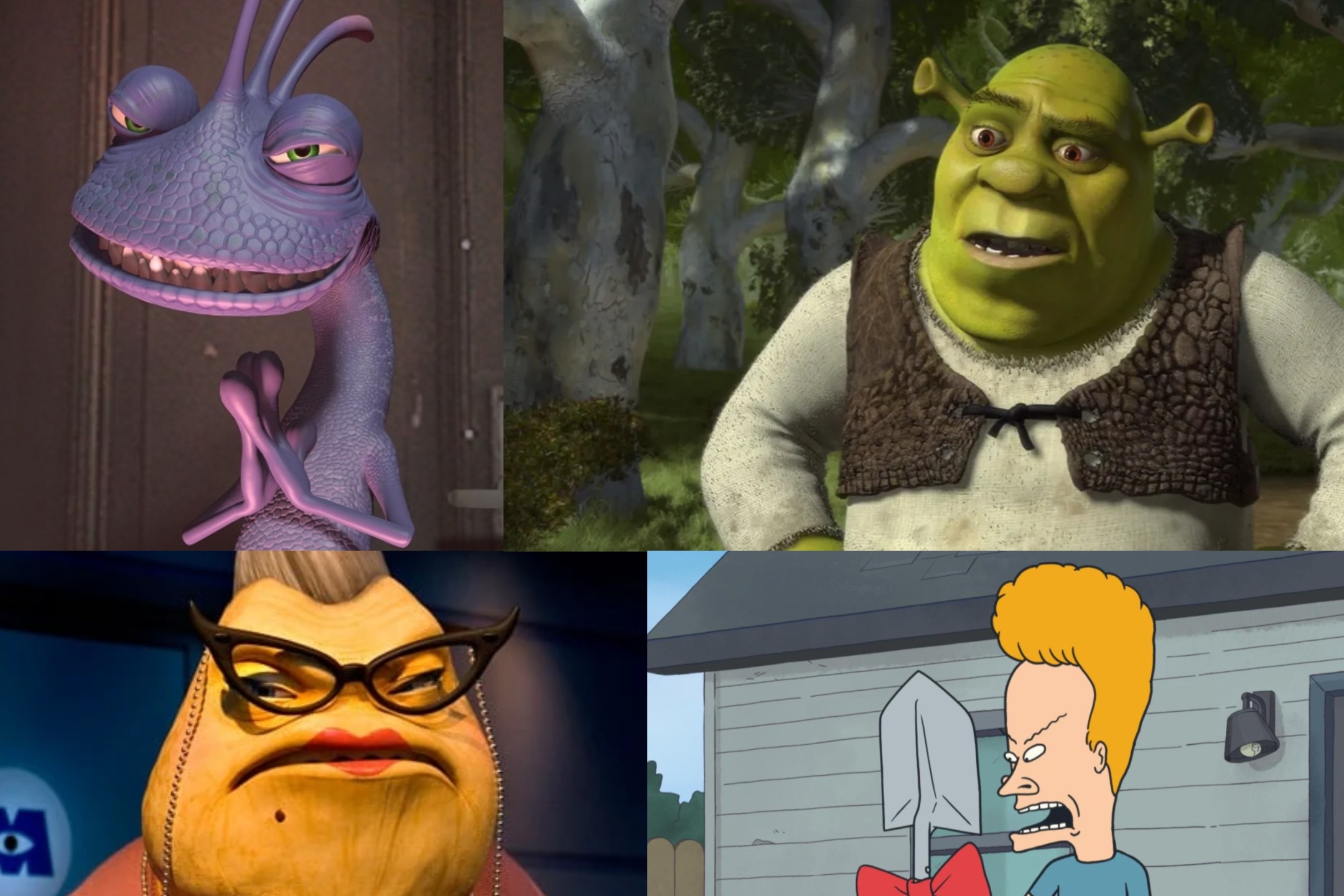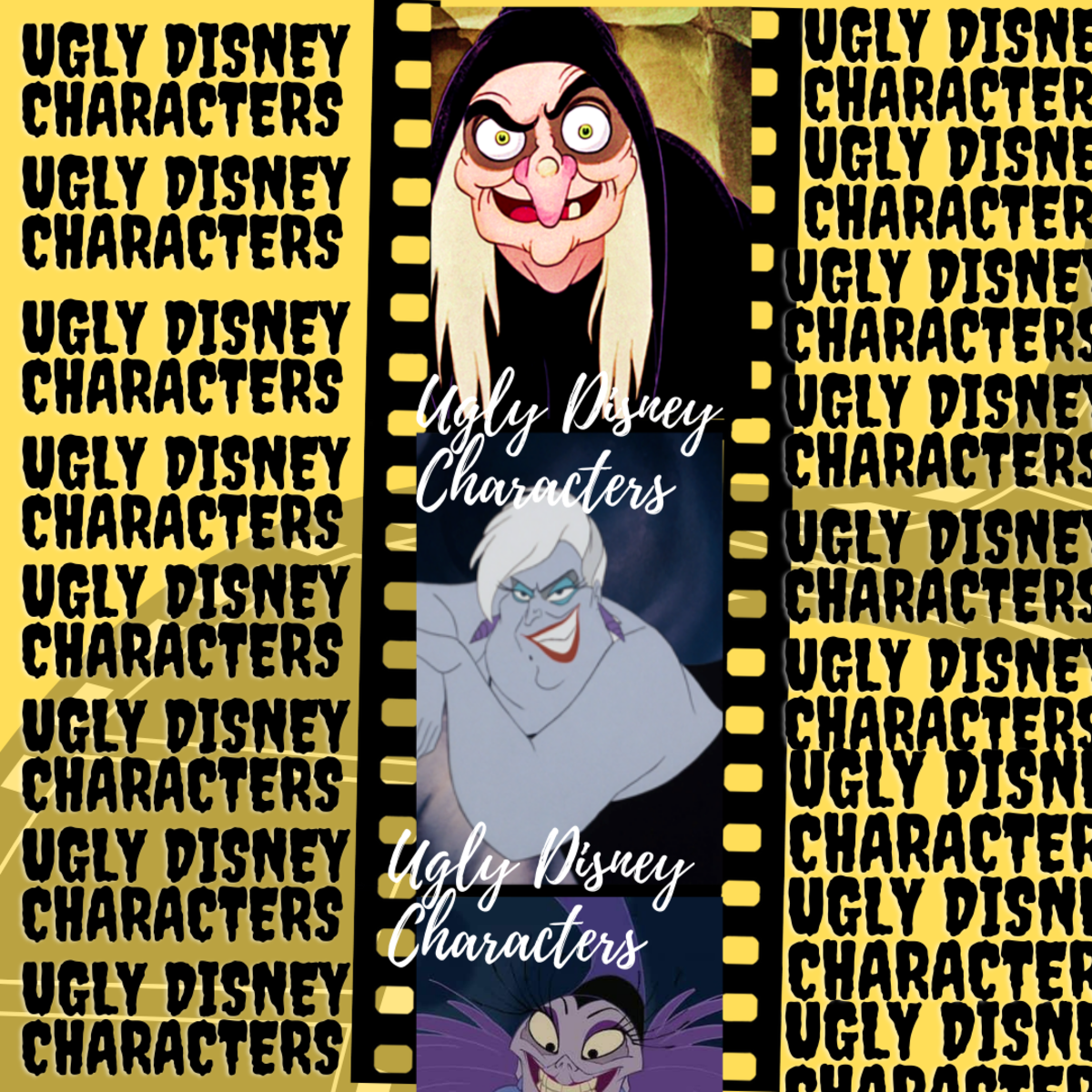Let's face it, TV shows aren't just about the good-looking faces. Sometimes, the most memorable characters are the ones who don't fit the typical "pretty" mold. These ugly TV show characters bring something unique to the screen, and they often leave a lasting impression. They remind us that beauty isn't just about looks—it's about personality, quirks, and the way a character grows over time.
Now, when we say "ugly," we don't mean it in a mean-spirited way. It's more like celebrating the unconventional. These characters break the mold, and that's what makes them special. They're relatable because they're real. They make mistakes, they're awkward, and sometimes they're downright hilarious. And honestly, that's what makes TV so much fun to watch.
So buckle up, because we're diving deep into the world of ugly TV show characters. We'll explore why they matter, how they've evolved over the years, and why we love them just the way they are. This isn't just about looks—it's about heart, humor, and the humanity that makes these characters unforgettable.
Read also:Bald Characters Unveiling The Power And Impact Of Hairless Heroes
Here's a quick guide to what we'll be covering:
- Biography of Iconic Characters
- The Evolution of Ugly TV Show Characters
- Famous Examples of Ugly TV Show Characters
- Why These Characters Matter
- Their Impact on the Audience
- Behind the Scenes: How They're Created
- Future Trends in Character Design
- Audience Reactions and Feedback
- Conclusion: Celebrating Diversity in TV
- Call to Action
Biography of Iconic Ugly TV Show Characters
Before we dive into the nitty-gritty, let's take a moment to appreciate some of the most iconic ugly TV show characters. These aren't just sidekicks or background players—they're central to the storylines and the shows themselves. Below is a quick look at a few of these unforgettable characters:
Character Profile
| Name | Show | Role | Why They're Iconic |
|---|---|---|---|
| Veronica Lodge | Riverdale | Rich, sassy villain-turned-heroine | Her transformation from a mean girl to a complex character with depth |
| Dr. Gregory House | House M.D. | Misogynistic, rude genius doctor | His sharp wit and no-nonsense attitude made him unforgettable |
| Sheldon Cooper | The Big Bang Theory | Brilliant but socially awkward physicist | His quirks and lack of social skills made him relatable yet hilarious |
These characters may not fit the traditional beauty standards, but they bring something to the table that no amount of makeup or perfect hair can replicate. Their uniqueness is what makes them shine.
The Evolution of Ugly TV Show Characters
Back in the day, TV shows were all about the handsome prince and the beautiful princess. But as the industry evolved, so did the characters. Writers started realizing that not every hero has to look like a supermodel. In fact, some of the best stories come from characters who challenge those norms.
Take, for example, the late '90s and early 2000s. Shows like "The Simpsons" and "Family Guy" introduced us to characters who were far from conventionally attractive. Homer Simpson, with his balding head and love for donuts, became one of the most beloved characters in TV history. Peter Griffin, with his awkward charm and terrible life choices, became a household name. These characters weren't trying to be beautiful—they were trying to be real.
Fast forward to today, and we see a shift toward more diverse representation. Shows like "BoJack Horseman" and "Rick and Morty" embrace the unconventional, giving us characters who are flawed, funny, and completely unforgettable. This evolution shows that audiences want more than just pretty faces—they want depth, humor, and relatability.
Read also:Derek Deso The Rising Star In The World Of Education And Content Creation
Famous Examples of Ugly TV Show Characters
Let's talk about some of the most famous ugly TV show characters and why they're so memorable:
Homer Simpson
Homer Simpson is the quintessential example of an ugly TV show character who became a cultural icon. Sure, he's bald, overweight, and works at a nuclear plant, but he's also hilarious, lovable, and deeply human. His flaws make him relatable, and his love for his family makes him endearing.
Sheldon Cooper
Sheldon Cooper from "The Big Bang Theory" is another great example. He's brilliant, but his lack of social skills and quirky behavior make him one of the most memorable characters on TV. His journey from a socially awkward genius to a more well-rounded person is what makes him so compelling.
Dr. Gregory House
Dr. Gregory House from "House M.D." is another character who defies traditional beauty standards. He's rude, sarcastic, and often unbearable, but his brilliance and wit make him impossible to ignore. His character is a reminder that intelligence and charm don't always come in a pretty package.
Why These Characters Matter
Ugly TV show characters matter because they reflect the real world. Not everyone looks like a supermodel, and that's okay. These characters remind us that beauty isn't just skin-deep—it's about personality, humor, and the ability to connect with others.
They also challenge societal norms and expectations. In a world where we're bombarded with images of perfection, these characters are a breath of fresh air. They remind us that it's okay to be different, and that our quirks are what make us unique.
Moreover, these characters often serve as role models for viewers who don't fit into the traditional beauty mold. They show that you don't have to look a certain way to be successful, funny, or loved. That's a powerful message, especially for younger audiences.
Their Impact on the Audience
The impact of ugly TV show characters on the audience is significant. They create a sense of connection and understanding that goes beyond physical appearance. Viewers see themselves in these characters, and that creates a bond that's hard to break.
Research shows that diverse representation in media leads to more positive self-image and increased empathy among viewers. When we see characters who look like us or share our struggles, it validates our experiences and makes us feel seen.
For example, a study by the Representation Project found that viewers who watched shows with diverse characters reported feeling more confident and less judged by societal standards. That's the power of these characters—they change the way we see ourselves and the world around us.
Behind the Scenes: How They're Created
Creating ugly TV show characters isn't as simple as it seems. It requires a lot of thought and consideration. Writers and producers have to balance humor, relatability, and realism to create characters that resonate with audiences.
Here are a few things that go into creating these characters:
- Backstory: Every character has a backstory that explains why they are the way they are. This adds depth and complexity to their personality.
- Personality Traits: Ugly TV show characters often have unique personality traits that make them stand out. Whether it's a love for donuts or a fear of social situations, these traits make them memorable.
- Visual Design: The way a character looks is just as important as their personality. Designers work hard to create characters who are visually interesting and distinct.
Future Trends in Character Design
As the TV industry continues to evolve, we can expect to see even more diversity in character design. Writers and producers are becoming more aware of the importance of representation, and that's leading to more inclusive storytelling.
One trend we're seeing is the rise of animated shows that embrace unconventional characters. Shows like "BoJack Horseman" and "Rick and Morty" are pushing the boundaries of what TV characters can look like, and audiences are loving it.
Another trend is the focus on mental health and emotional well-being. Characters who struggle with anxiety, depression, or other mental health issues are becoming more common, and that's a good thing. It shows that TV is becoming more aware of the challenges people face in real life.
Audience Reactions and Feedback
Audience reactions to ugly TV show characters are overwhelmingly positive. Viewers appreciate the authenticity and relatability these characters bring to the screen. Social media is full of fan art, memes, and discussions about these characters, proving just how beloved they are.
For example, when "The Big Bang Theory" ended, fans flooded social media with tributes to Sheldon Cooper. They praised his quirks, his humor, and his growth over the years. It was a reminder that these characters leave a lasting impact on their audiences.
Feedback from viewers also shows that they want more diversity in character design. They want to see characters who look like them, talk like them, and share their experiences. That's a powerful message for writers and producers who are looking to create more inclusive content.
Conclusion: Celebrating Diversity in TV
In conclusion, ugly TV show characters are more than just quirky sidekicks—they're an essential part of the TV landscape. They bring depth, humor, and relatability to the screen, and they remind us that beauty isn't just about looks.
These characters challenge societal norms and expectations, and they create a sense of connection and understanding among viewers. They show us that it's okay to be different, and that our quirks are what make us unique.
As the TV industry continues to evolve, we can expect to see even more diverse and inclusive storytelling. And that's something to celebrate.
Call to Action
So what can you do? Start by watching more shows that feature diverse and unconventional characters. Share your favorite ugly TV show characters on social media, and let others know why you love them. And most importantly, remember that beauty comes in all shapes and sizes.
Thanks for reading, and don't forget to leave a comment below. Who's your favorite ugly TV show character? Let us know!


